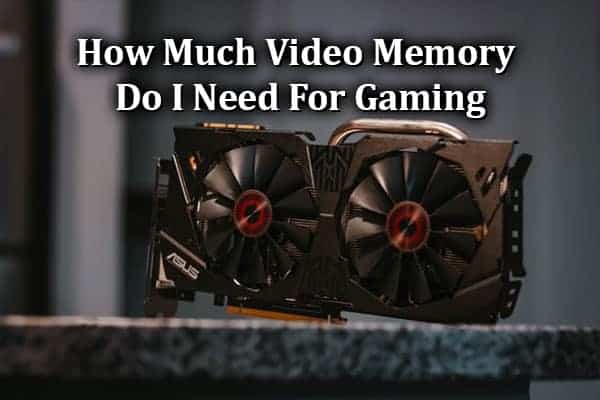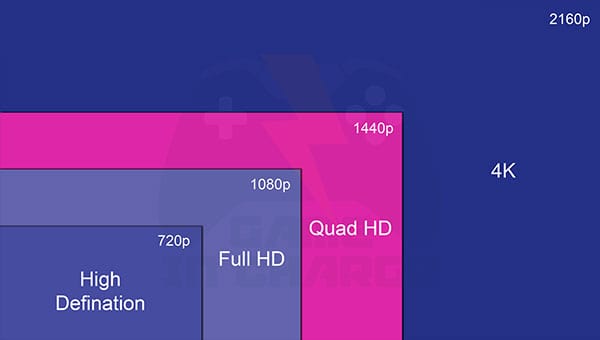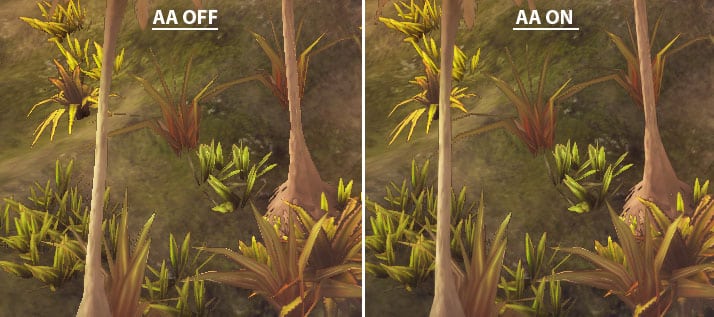Back in the days, when I started building my gaming system, I used to wonder how much video memory do I need for gaming? I wanted to have the best gaming experience with the appropriate graphics memory allocated to my gaming system. Hence, I started looking out for the right answers and after some research, I thought I should share answers with you guys so that you don’t have to go anywhere else to find out.
So, how much video memory do I need for gaming? You need a minimum of 4 GB video memory for gaming with 1080p screen resolution. You need more than 8 GB if you want gaming in 4K, video editing, and streaming simultaneously. However, 2GB of video memory is enough for games that are not high graphics demanding.
But there is much more to identify what really influences the VRAM and how you can have future-proof components. I have covered some questions and their answers related to video memory, read further so that you can make decisions that you won’t regrate later.

How much video memory do I need for gaming? Let’s find out
When I started my research on the VRAM and its best application, I stumbled upon many sources that have very different and contrasting opinions. What I have learned is that the answer depends on the screen resolution of your monitor, the game that you want to play, and the settings for the game that you want to play.
In the following article, I have tried to cover right from what is VRAM to the best VRAM for your gaming system. Please go through each section that is interesting to you or want to know more about. I hope you will find the answer to the question of how much video memory do I need for gaming.
What is VRAM and what it does?
Video RAM, or VRAM, is a dual-ported variant of dynamic RAM (DRAM), which was once commonly used to store the framebuffer in graphics adapters. Note that most computers and game consoles do not use this form of memory, and dual-ported VRAM should not be confused with other forms of video memory. Prior to the development of VRAM, dual-ported memory was quite expensive, limiting higher resolution bitmapped graphics to high-end workstations.

VRAM improved the overall frame buffer throughput, allowing low-cost, high-resolution, high-speed, color graphics. Modern GUI-based operating systems benefitted from this and thus it provided a key ingredient for the proliferation of graphical user interfaces (GUIs) throughout the world at that time.
It is a specialized version of DRAM the dynamic random access memory that works similarly such as RAM which fed data to the CPU and the VRAM helps to feed data to GPU to render images to your gaming monitor. This includes textures, frame buffer, shadow maps, bump maps, and lighting information where it is very easy for GPU to get this information from this VRAM directly rather than HDD / SSD or even from RAM.
VRAM vs RAM
RAM is the memory that your processor CPU uses to store data on which it is currently doing some computation. VRAM is the video RAM on which the graphic processor GPU store the data on which it is doing computation.
Not every computer or laptop has the VRAM as it is an additional component that comes with GPU. VRAM is specially used for high-level performance activities such as modern gaming, video editing, and streaming. Some latest laptops do have integrated graphics cards with certain VRAM allocated.

Both are essential parts for modern gaming and you should know what is the best fit for you. I would suggest knowing your requirements first such as the games that you want to play and with what screen resolution. Knowing these things will make you take the right decisions while choosing the best VRAM for your gaming system.
Also read: How Much Does RAM Affect Gaming?
What factors influence the VRAM usage by GPU?
Before we know the answer to the question of how much video memory do I need for gaming, we should know what are the factors that influence the VRAM usage by GPU. Knowing answers to this question will help us to find out the answer to our primary question.
Check all the factors to also understand how having less or more VRAM can affect the gaming experience especially when you also want to do video editing and streaming. Knowing these things also helps you to buy the best suitable graphics card which will be future proof.
Screen resolutions
So, how does screen resolution influence VRAM usage by GPU? The frame buffer stores the image as it’s rendered and before the time it sends to the display. The games those set to play on the 32-bit color depth that is 32 bits per pixel. Hence, the 1080pscreen resolution with 1920×1080 for 32 bits requires 8.3MB for a single frame. So when you increase that to the 4K screen resolution which is 3840×2160 for 32 bits will require 33.2MB for a single frame.

This calculation shows us that the frames required for 4K screen resolution have increased by 4 times than 1080p screen resolution. This means with each scale the screen resolution will increase the frame size and ultimately the required processing power by GPU. You will need 4 times more size of video memory to run smoothly when increased from 1080p to 4K screen resolution.
Below are the minimum video memory required for given screen resolutions: (Please note: the below estimates are based on the modern games / AAA games requirement with the screen resolutions. Other casual games may not need this much video memory to run smoothly)
| Screen Resolution | Minimum Video Memory Required |
| 720p / HD | 2 GB |
| 1080p / Full HD | 4 GB |
| 1440p / 2K / Quad HD | 6 GB |
| 2160p / 4K | 8 GB |
Also read: What Is The Best Resolution For Gaming?
Anti-aliasing
So, how does anti-aliasing influence VRAM usage by GPU? Anti-aliasing is a process that smooths out the edges in the image by increasing the pixel count. Basically, it is a function in the graphic setting that when enabled will increase the pixel count to make the images smooth.
The calculation can be estimated based on the screen resolution and that is why the screen resolutions are key factors for the influencing VRAM by the GPU. As we know that the pixel count increases with the screen size and when the anti-aliasing is enabled, the processing power requirement by GPU increases, and it affects the GPU performance if video memory is not enough.

Hence, you will need more video memory for anti-aliasing and it will also increase with the screen size that you want to use. Enough video memory will help to help buffer the images with a high pixel count and give you the best gaming experience.
The game that you are playing
So, how does the game that you are playing influence VRAM used by GPU? Every game out there has different requirements for graphics whereas some games have very high graphically demanding such as Far Cry 5, Assasin’s Creed Odyssey, Forza Horizon 4, GTA V, Red Dead Redemption 2, The Witcher 3: Wild Hunt, and many more.

These games will require high-speed rendering of the objects and textures to load for each frame. To do the fast-paced processing for a high frame rate such as 60 frames per second, the GPU will need the video memory to store as much of the data to feed with time. Some strategy games will also run with multiple AI which requires high processing and having good video memory will help the GPU to process so many things simultaneously.
Hence, the game that you are playing will directly influence the VRAM used by GPU. If you are a pro gamer and in a competitive environment, the bad performance due to lack of video memory should be the last thing you want.
The graphics settings and the game that you are playing
So, how do the graphic settings and the game that you are playing influence VRAM used by GPU? Your graphics card comes with additional settings to fit your requirements with the settings depending on the out you want such as frame rate, display resolutions, visual details, input lag, sharpness, enhance sync, texture quality, and much more.

Hence, when you choose the levels for all the options available in the settings will determine the requirement of the performance to the GPU. When you select high or ultra visual quality with high resolution, GPU will require enormous data to be processed and that will depend on the size of video memory you have.
I had the experience of improving gaming performance by changing some things in the game setting. Games that graphically demanding will have additional graphics options in the game settings. Make sure you choose the settings based on how much performance your GPU can handle. The trial and testing with game settings will help you identify the differences in in-game performance.
How to increase VRAM performance?
Well, the best way to increase VRAM performance is to get the new dedicated VRAM but that is not the case in some gaming laptops, you can increase the dedicated shared video memory with BIOS setup in Windows by allocating the max available. if you have the Intel integrated graphics then the BIOS set up shared video memory allocation will boost the performance. First, identify how much video memory do I need for gaming before increasing its performance.
Increasing Dedicated VRAM from BIOS
1. Restart your computer and enter the BIOS settings at the next startup by pressing the dedicated BIOS key repeatedly during the bootup. Try pressing F2, F5, F8, or Del key repeatedly. If that doesn’t work, search online for specific steps on entering the BIOS settings in relation to your motherboard manufacturer.
2. Once you reach the BIOS menu, look for a menu similar to Graphics Settings, Video Settings or VGA Share Memory Size. You can typically find it under the Advanced menu.

3. Then, up the Pre-Allocated VRAM to whichever option suits you best.
4. Save the configuration and restart your computer. At the next startup, use the procedure above to see if the VRAM count has been increased.
Find more steps at here
The performance at the graphic level mainly depends on the GPU type and you can go for entry-level GPU if you are not looking for high-end gaming, mid-level GPU will be sufficient for most games with 1080p screen resolutions. But if you want to play games in 1440p and 4K then you should go for the high-end GUP which is powerful to sustain full-scale gaming.
How much VRAM should I allocate?
You can allocate VRAM depending on the screen resolution and the graphics required for the game for 1080p you should have a minimum of 4GB VRAM and 8GB for 4K resolution. You can play casual games that are not graphics demanding with 2GB VRAM. Also make sure you consider other factors such as anti-aliasing, frame rate, and input lag that will have an impact on the gaming performance, hence make sure you have sufficient video memory allocated to the GPU.

The selection of the video memory size depends on multiple factors such as the type of GPU and the graphic requirements for the games that you want to play. Increasing video memory just for the sake of improving performance won’t make any big difference until and unless you have the equivalent GPU. That is why these things are important to consider before any graphics card purchase.
How much VRAM do I need for 4K?
Your GPU can perform well with a minimum of 8GB VRAM at screen resolution 2160p which requires 4 times more than 1080p screen resolutions, but it is advisable to have more than 8GB video memory along with a high-end GPU. 1080p screen resolution gaming is generally allocated with 4GB of video memory which is considered adequate these days.
But as games are getting better and better graphically day by day the demand for the performance will go up in the future. So to ensure that the performance 4K screen resolutions will be sustained by these games you should have at least 8GB of video memory or more to be future proof. There are great graphics cards released by AMD and NVIDIA which can perform really well in 4K resolutions.
How much VRAM do I need for video editing?
In the video editing department, the only thing that takes time is rendering and it depends on the processing power of the system. For example, If you have one hour video which needs to be rendered, the 8GB video memory will complete the rendering job in half the time than 4GB video memory. Generally, without video memory, the system RAM will have to do the work but having video memory and GPU definitely helps in making that process efficient and fast.

Video editing is one of the works that need to be done on the high-end computer for faster rendering. many gamers around the world do record their games and will need video editing for their YouTube channel. Thus, having a gaming system with VRAM can be beneficial for video editing and faster rendering.
How much VRAM do I need for gaming plus streaming?
If you want to stream your gaming and want to have smooth performance, then you should at least have an 8GB video memory. You should also consider other factors such as the game that demands graphics performance. If your game demands high-end graphical settings then you should have more than 8GB VRAM with high-end GPU.
8GB of VRAM is enough for streaming games, but when you stream more graphically demanding games you may experience some issues with stream quality. This will lead you to limit the number of other apps to run simultaneously while streaming. 16GB of RAM will be enough for streaming and give you the freedom to do other stuff.
Best Graphics card for gaming
The following are the top graphics cards that you should consider for the best gaming performance and other activities such as video editing and streaming. These lists consist of the name of the graphic card series and you might find the different brands with the same build, make sure to check the reviews before you select one. We also recommend checking out the best gaming laptops with the best graphics cards.
| Graphics Card | Memory | GPU Cores |
| RTX 2080 Super | 8GB GDDR6 | 2,944 |
| RTX 2080 Ti | 11GB GDDR6 | 4,352 |
| RTX 2070 Super | 8GB GDDR6 | 2,560 |
| GTX 1660 Super | 6GB GDDR5 | 1,408 |
| RTX 2060 Super | 8GB GDDR6 | 2,176 |
| RX 5700 XT | 8GB GDDR6 | 2,560 |
| GTX 1080 Ti | 11GB GDDR5X | 3,584 |
| GTX 1650 Super | 4GB GDDR6 | 1,280 |
| RX 5600 XT | 6GB GDDR6 | 2,304 |
| RX 5700 | 8GB GDDR6 | 2,304 |
I hope you have got the answer to the question of how much video memory do I need for gaming. Also, there are answers to the other follow-up questions that you might have in your mind after the primary question. Please let us know how do you like the article and your suggestions in the comment box below. Cheers!
